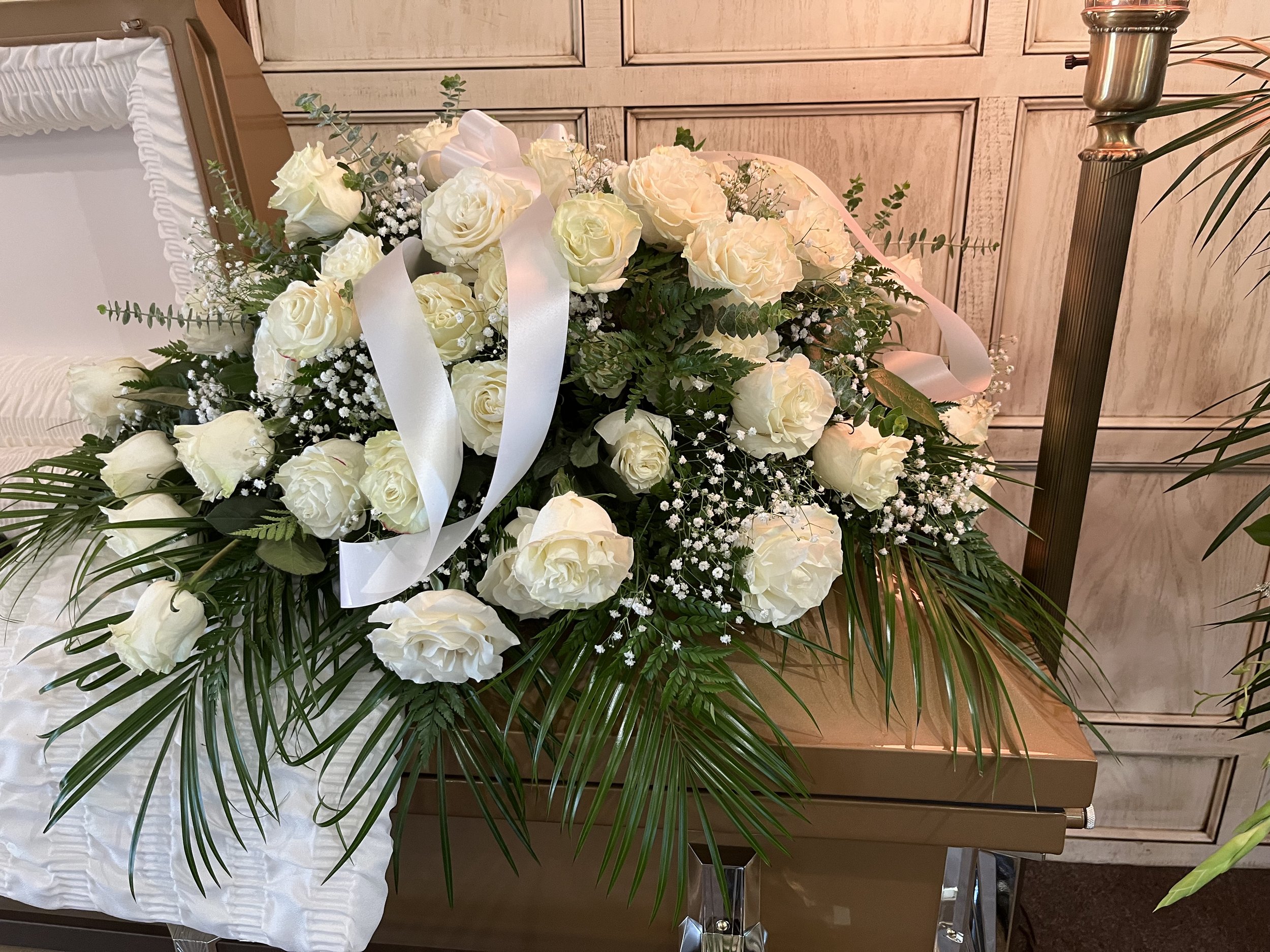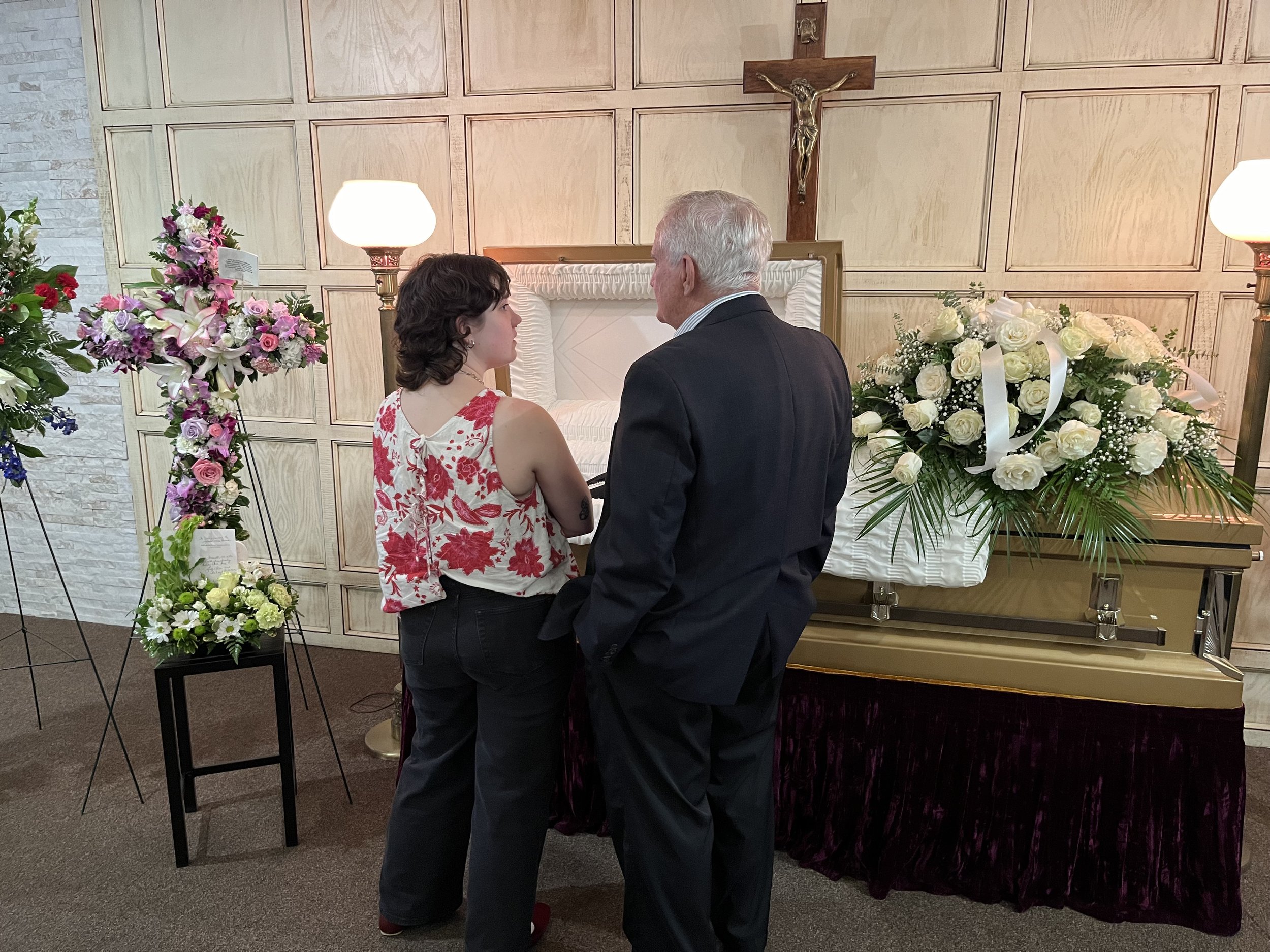
Memorial Service
Memorial Service
A Time to Pause, Reflect, Say Thank you, and Farewell until we meet again
When you first learn that someone you love has passed away, the initial reaction is usually disbelief. Once the reality sets in, the most common response is to burst into tears. Allow yourself that good cry. After that, you typically contact other loved ones and begin making arrangements, such as calling family and friends. Then comes the burial of your loved one.
We believe that the body is a vessel that harbors the spirit, and we see death as a transition into a new life rather than the end of life. We take great care to treat the body of our deceased loved ones with respect and dignity.
There are different ways to prepare the body for interment:
Traditional Burial: This involves embalming the body, dressing it, and placing it in a coffin. Family and friends can see it at the wake/viewing. The body may then be buried in a mausoleum or the ground. This is the most costly form of burial since it requires embalming the body, purchasing a coffin, and a crypt/burial plot.
Hybrid Burial: The body is embalmed and placed in a coffin for the wake/Viewing. Afterward, it is cremated, and the ashes are placed in an urn. The urn may be placed in a niche at a mausoleum so that family and friends may visit it later or take it home. The ashes may also be scattered in the ocean. This is less costly since it saves purchasing a crypt and Burial plot costs.
Cremation: The body is not embalmed but cremated before being placed in an urn. The urn may be placed in a niche at a mausoleum so that family and friends can visit it later, or it may be taken home by family members. The ashes may also be scattered in the ocean. This option has become popular due to economic factors since it does not require embalming or purchasing a crypt or Burial plot.
The average dimensions for a cremation niche start at heights and widths of 1 ft x 1 ft. However, many niches are much larger to accommodate multiple urns or the urns of an entire family (family columbarium).
A word about costs: Please be mindful of expenses. The last thing your loved one would have wanted is to impose a crushing financial burden or a lasting debt on their surviving loved ones.
The funeral usually consists of four main parts:
1. The Wake/Viewing
2. The Funeral/Celebration of Life Service
3. The Graveside/Burial at sea
4. The Reception
NOTE: Sometimes, all of these (with #3 omitted) are combined into a Celebration of Life Service held at A Restaurant. The Urn may or may not be present. In this case, a Large photograph of the deceased accompanied by a floral display is most appropriate.
The Wake (Viewing, Vigil)
This usually occurs at the Funeral Home the evening before the Funeral, typically between 7:00 PM and 11:00 PM. Holding the wake in the evening allows for greater attendance and accommodates those who cannot take time off from work.
It is a time when family and friends see their loved one for the first time after learning of their passing, and it provides an opportunity for attendees to console each other, reminisce, and share eulogies. The eulogy is an opportunity to express gratitude and bid farewell until we meet Again. This is best done at the Wake since it is held at the Funeral home in an indoor climate-controlled space with comfortable seating, water fountains, and restrooms.
NOTE: If you opt for Cremation, a large photograph of your loved one next to the Urn is suggested at the wake.
The suggested order of speakers includes:
The spouse/life partner.
Parents.
Children.
Siblings.
Relatives.
Close friends.
Colleagues and Classmates.
An open microphone for others who may wish to speak.
Consider uploading photos of your loved ones onto a flash drive. Ask the funeral home if they could play these at the wake service. You may wish to give flash drives to family and close friends as a much-appreciated remembrance of your loved one's life.
The Eulogy is your opportunity to accomplish two goals:
Say, "Thank you."
Say, "Farewell until we meet again."
Some suggestions for composing your Eulogy:
Please keep in mind the following information. A tribute to the departed individual's life has likely been published in the form of an obituary, which will detail the significant events of their life. Please refrain from providing a redundant chronological biography of the deceased's life.
Reflect on the positive attributes of the deceased and how they impacted your life. Consider how your interactions with the deceased influenced and changed your life and what valuable life lessons you learned from them. Also, think about the qualities the deceased demonstrated that helped you grow.
When writing, please consider this as a letter to your loved one. Imagine having a final conversation with them. What would you say to them as you part? Close your eulogy with the main sentiment you want to communicate to your deceased loved one.
I suggest you write an Annotated outline of your Eulogy instead of trying to speak extemporaneously. This will help you orient yourself as you speak.
The Funeral (Memorial Service), Celebration of Life Service:
This typically occurs at the Funeral Home or a House of Worship and is most often scheduled for late morning, usually at 10:00 or 11:00 a.m. I will customize this to fit your and your family’s preferences and needs.
The Graveside or Burial at Sea:
After the Funeral Service, the body or ashes are taken to the grave/Niche or burial at Sea for a final service. This service consists of blessing the gravesite and praying for the repose of the deceased's soul. It can also be customized to fit your and your Family’s preferences and needs.
The Reception
This is usually held in a home, hall, or restaurant. It allows family, relatives, and friends to support, share stories, and comfort each other before going home.
The Wake, Funeral and Graveside





